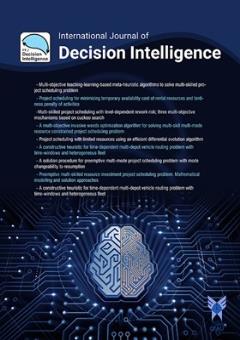-
-
List of Articles
-
Open Access Article
1 - Portfolio optimization based on return prediction using multiple parallel input CNN-LSTM
Hatef Kiabakht Mahdi Ashrafzadeh -
Open Access Article
2 - Enhancing Lung Cancer Diagnosis Accuracy through Autoencoder-Based Reconstruction of Computed Tomography (CT) Lung Images
Mohammad Amin Pirian iman heidari Toktam Khatibi Mohammad Mehdi Sepehri -
Open Access Article
3 - Autonomous Robot Navigation in Dynamic Environments: A Temporal-Difference Learning Approach
arsalan montazeri sara Shademani Alishah vajiheh Ghasemi -
Open Access Article
4 - DEA-Based Evaluation of the Oil Prices Effect on Industry: A Case Study of the Stock Exchange
Ali Taherinezhad alireza alinezhad -
Open Access Article
5 - Ranking the Generalized Fuzzy Numbers Based on the Center of the Area
Vahid Mohammadi Esmaeil Mehdizadeh Seyed Mojtaba Hejazi -
Open Access Article
6 - The Impact of Organizational Structure on Organizational Performance by Applying Balance Scorecard: A Case Study
sayyed mohammadreza davoodi mansoor abedian
-
The rights to this website are owned by the Raimag Press Management System.
Copyright © 2021-2025







